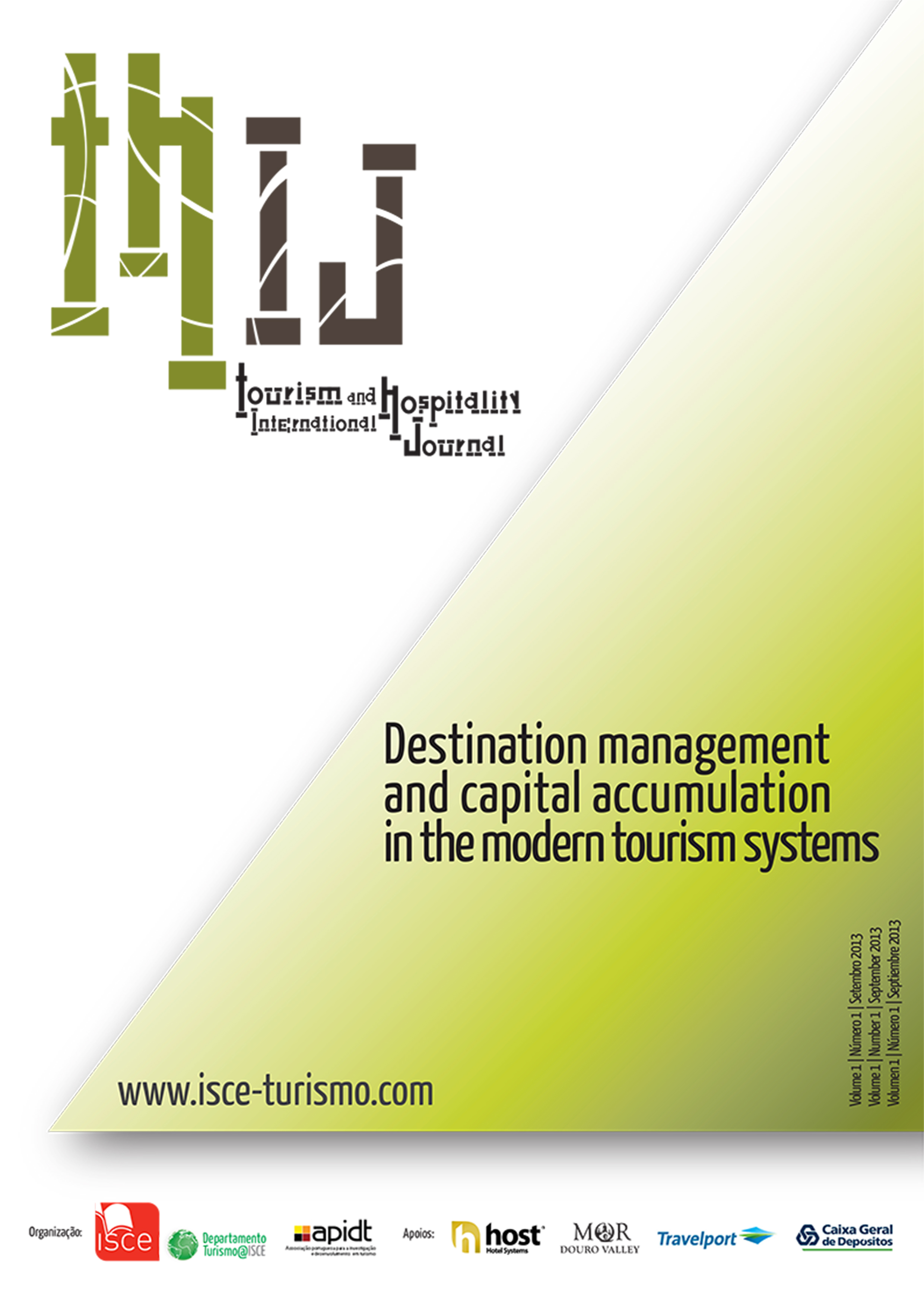Patrimonio Cultural Cafetero Ejemplo de productos innovadores como elementos para la competitividad de Colombia
DOI:
https://doi.org/10.57883/thij1(1)2013.29752Keywords:
competitiveness, innovation, tourism, Eje Cafetero, ColombiaAbstract
Since UNESCO considered the Colombian coffee landscape as heritage, measures began to be developed for its preservation and sustainability. The need arose from the Ministry of Culture and aimed to "preserve, revitalize and promote cultural heritage and articulate regional development" (Ministry of Culture, 2011:66), leading to the presentation of projects for the understanding and dissemination of coffee as Cultural Heritage (CCP), since it is necessary the generational transmission of cultural values and thus achieve its conservation and sustainability. This paper aims to show innovative tourism products that have affected the competitiveness of the tourist destination, for which we start from the concept of competitiveness, and then we analyze the case study of coffee in Colombia, with which we seek to show that the subject innovation is an important source of generating competitive advantages, showing some innovative products that are being offered in this area. This paper was constructed by conducting an extensive literature review on the issues of competitiveness, marketing and innovation. It also drew on secondary sources and the observation method to survey the case of coffee. One of the conclusions that emerges is that a competitive destination in the tourism industry is created from the competitive advantages that accompany its comparative advantages. In other words, it takes more than a wide range of tourism products and resources.
References
Arango Gaviria, O. (2012). Reordenamiento territorial en el Paisaje Cultural Cafetero: una tarea pendiente. Labor & Engenho, 6(2), 16-24.
Crouch, G.I. & Ritchie, B.J.R. (2003). Tourism, competitiveness and societal prosperity. Journal of Business Research, 137-152.
Duque, G. I. (s/d). Sustentabilidad del Patrimonio Urbano en el Paisaje Cultural Cafetero. Presentación en Power Point. Universidad La Gran Colombia.
Dwyer, L. & Chulwon, K. (2003). Destination Competitiveness: Determinants and Indicators. Current Issues in Tourism, 6(5), 369-414.
Euro Cost Internacional. Bogotá es una de las 30 ciudades más caras del mundo. 18 Noviembre 2012. 3 Abril 2013. <http://www.wradio.com.co/noticias/actualidad/bogota-es-una-de-las-30-ciudades-mas-caras-del-mundo/20121118/nota/1797287.aspx>.
Fondo de Promoción Turística. Colombia. Experiencias turísticas en Colombia. El sello "Colombia inolvidable. Presentación. Ibagué: THR Innovative Tourism Advisors, 12 Septiembre 2012.
González P., Stephanie & Maicol Alejandro Montes A. (2011) Nivel de competitividad del Sector Turismo en el Departamento de Risaralda, desde el Sistema de Indicadores definido por el Ministerio de Comercio, Industria y Turismo. Pereira: Universidad Católica de Pereira.
Ministerio de Comercio, Industria y Turismo. Viceministerio de Turismo. (2008) Sistema de indicadores de competitividad para el turismo colombiano. Bogotá.
Ministerio de Cultura de Colombia. (2011). Paisaje Cultural Cafetero. Un paisaje cultural productivo en permanente desarrollo. Bogotá: Nomos Impresores.
Otero, Adriana M. (2006) La formación de recursos humanos en turismo y recreación para la competitividad regional de la Patagonia argentino chilena. Aportes y Transferencias, 1(10), 62-77.
Pinzón Sánchez, Gustavo. Factores reales y valores en Paisaje Cultural Cafetero. n.d.
Proexport Colombia. Informe Turismo Extranjero en Colombia. Cifras de Turismo 2012. n.d. Dirección de Información Comercial - Inteligencia de Mercados. 4 Abril 2013. <http://www.colombiatrade.com.co/sites/default/files/informe_proexport_turismo_extranjero_en_colombia_a_diciembre_2012_final.pdf>.
Rivera P., Jorge Andrés (2008). Paisajes alterados: Retrospectiva del manejo ecológico social de la vertiente. Cordillera Central. Eje Cafetero Colombiano. Revista Luna Azul, 27, 10-28.
Rodríguez D., María del Mar & Manuel Guisado T. (2003). Competitividad y análisis estratégico del sector turístico en Galicia: consideraciones para la mejora competitiva. Revista Galega de Economía, 12(1), 1-22.
Sabaté Bel, J. (2012). Paisaje Cultural Cafetero en Colombia: reflexiones desde Cartagena de Inidas, Jaguariúna, París y Barcelona. Revista Labor & Engenho, 6(2), 1-7.
Salazar, S. (2012). Anunciaron dinero y compromiso para el Paisaje Cultural Cafetero. La patria, 4 Mayo.
Universidad Tecnológica de Pereira- Red Alma Máter (2010). Guía para la Integración del Plan de Manejo del Paisaje Cultural Cafetero en el Ordenamiento Territorial. Pereira.
World Economic Forum (2013). The Travel & Tourism Competitiveness Report 2013. Geneve.
Zuluaga G., Lina María. (s/d). Paisaje Cultural Cafetero. Abril Indiscreto.
Downloads
Published
How to Cite
Issue
Section
License
Copyright (c) 2013 This work is licensed under a Creative Commons - Attribution 4.0 International (CC BY 4.0)

This work is licensed under a Creative Commons Attribution 4.0 International License.
This work is published under the Creative Commons Attribution 4.0 International License.






